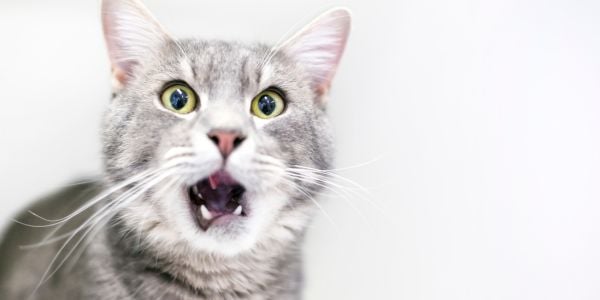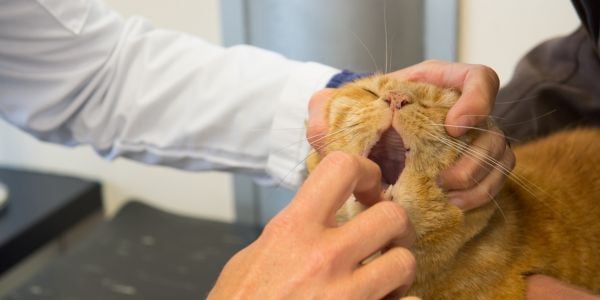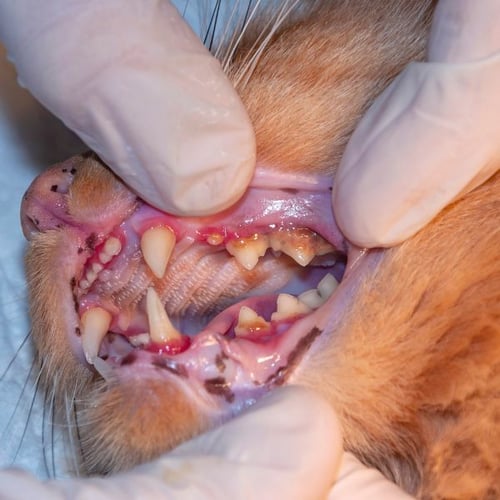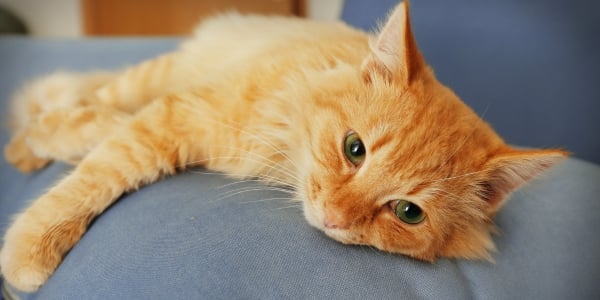 I would say just about every single person on the planet has bit their tongue or cheek at least once (if not more!) in their life.
I would say just about every single person on the planet has bit their tongue or cheek at least once (if not more!) in their life.
Most of us, me included, are quite dramatic when it happens since the pain can be quite severe.
As humans, we can express the degree of pain we are in and often can receive treatment and medication to quickly relieve our discomfort.
But what if we couldn’t express how painful we are? Would you be able to live with that level of pain all day, day in and out?
Well, unfortunately, cats suffering with stomatitis can’t tell us. They can be living in constant discomfort and pain for a long time.
We generally are not in the habit of looking in their mouth for issues, and we don’t often realize the extent of their pain since they are masters at hiding it.
That is why it is so important to understand what stomatitis is, how to recognize it, and what options are available to help our beloved feline friends.
What Is Feline Stomatitis?
The dictionary defines stomatitis as “inflammation of the mucous membrane of the mouth.” But that definition doesn’t truly encompass feline stomatitis.
This painful disease in cats, also called feline chronic gingivostomatitis (FCGS), affects about 0.7 to 4% of cats. It is characterized by severe generalized inflammation of the mucous membranes in the mouth and can also involve the gums, tongue, the floor and roof of the mouth, and the inner surface of the lips. It can also extend down the throat in some cases.
Can Stomatitis Be Prevented in Cats?
There is no way to prevent stomatitis since the exact cause of the condition is largely unknown at this time. Suspected triggers that are thought to be involved include viruses, such as calicivirus, FeLV, and FIV, bacteria, inflammatory dental disease, such as resorptive lesions and periodontal disease, and systemic diseases, such as kidney failure and allergies.
An altered immune state – both inadequate and excessive responses – is thought to permit and maintain the condition. For example, affected cats appear to have an overreaction to the bacteria present in the plaque. This leads to an excessive inflammatory reaction, which then progresses into a severe auto-immune condition as the dental tissue is attacked if treatment doesn’t occur.

Stomatitis is generally seen in cats between 3 and 10 years of age. However, it can also occur in younger and older cats.
Cat Breeds Most Affected By Stomatitis
Any breed of cat can be affected, but symptoms seem to appear more severe in Siamese, Abyssinians, Persians, Himalayans, and Burmese.
Signs and Symptoms of Feline Stomatitis
About 73% of cat owners don’t brush their cat’s teeth. Therefore, early signs of stomatitis are missed. And if cats don't see their veterinarian at least once a year, then the condition can be missed in it's earliest stages.
Early signs of the condition appear as inflamed gums (gingivitis): redness, slight swelling at the gumline, and bad breath. When teeth and gums are brushed, bleeding often occurs. So, if you brush your cat's teeth, you might notice blood on the toothbrush, or you may notice blood on toys that they chew on.
Inflammation, characterized by increased amount of tissue that is red and inflamed in the far back of the mouth where the maxilla (upper jaw) curves down to meet the mandible (lower jaw), is the classical appearance as the condition progresses.
See the video below for what to look for.
Clinical Signs of Pain Associated With Stomatitis
Once severe, it is one of only a few dental diseases that cause signs of pain, like the following:
-
Loss of appetite
-
Dropping food from their mouth when eating
-
Weight loss
-
Excessive drooling
-
Hiding
-
Vocalization
-
Hissing at food
-
Poor grooming
-
Pawing or rubbing at their mouth
-
Hesitant to yawn or open mouth

How Feline Stomatitis Is Diagnosed
Diagnosis is generally based on the presenting symptoms and examination since there isn’t a laboratory test to diagnose stomatitis. However, since oral inflammation can be caused by some systemic diseases as well as common gingivitis and periodontal disease, your veterinarian will recommend blood work (CBC, Chemistry), screening tests for FeLV and FIV, urinalysis, and dental x-rays. Other tests, such as biopsies, may be recommended if the inflammation is more localized to a specific area of the mouth.
Note: Dental X-rays and biopsies need to be performed while your cat is under general anesthesia.
How Feline Stomatitis Is Treated
There is no specific treatment for this condition since the specific cause is unknown. Treatment of this chronic inflammatory condition is often lifelong.
The stage and severity of the stomatitis will determine what treatments and management are needed. Additionally, if any underlying causes can be diagnosed, treatment of them is an essential part of management.
Generally, the first step of care, regardless of the stage and severity, involves a thorough oral health evaluation and dental cleaning. This is done under general anesthesia since it is critical to have accurate dental X-rays and to remove any plaque and tartar under the gumline.
In some cases, the gingivitis will subside after cleaning. These cats require dental cleanings done regularly every four to six months.
At-home Care
In addition to what your cat's veterinarian will do, a regular dental home care program is essential. Dental home care programs involve brushing once to twice daily, using a dental rinse or gel that contains chlorhexidine or zinc ascorbate, and supplements to support dental health, such as probiotics, food additives, and water additives. Your veterinarian may also recommend a dental diet in these cases.
Generally, a combination of at home treatments works best, especially for cats that do not like their teeth brushed or rinsed. Also, it is important to remember, that supplements take time to ‘start’ working, and we don’t always notice their positive effects.
The majority of cases, however, involve additional treatment in addition to a complete dental cleaning and home care program.
Note: For cats with moderate to severe cases, teeth brushing is typically not part of the dental home care program since it can cause additional pain. Therefore, it is important to rely on other management techniques.
Antibiotics are often prescribed as part of the treatment regime as well as corticosteroids and other pain medications. In some cases, immunosuppressive drugs (such as cyclosporin) may be necessary.
In some cases, cold laser therapy has been shown to decrease pain and inflammation and aid in healing.
Though it shows promise, further studies are needed to determine if acupuncture is truly effective in managing feline stomatitis.

When Treatment Isn't Enough or Working
When medical management alone isn’t effective, surgical management becomes essential. Surgical management involves the removal of some or all the teeth.
About 60% of cats that have full-mouth extractions require no further medical treatments and have a great quality of life. Medical management is still needed for those cases that do not resolve after extractions.
Many cat owners struggle with the notion of having all their cat’s teeth removed. But, speaking from experience, the improvement in the cat’s quality of life is dramatic. Once healed, they are significantly more comfortable, and they regain the joy from eating and playing.
Preventing Stomatitis
As mentioned, you can’t prevent stomatitis. BUT you can be proactive!
-
Begin a regular at-home dental program as soon as possible
-
Book annual veterinary examinations
-
Do routine oral health evaluations at home and by a veterinarian
-
Have routine blood work and other screening tests done
-
Book routine veterinary dental cleanings, including routine dental X-rays
-
Feed a high-quality, well-balanced diet to be sure your cat is getting all the essential nutrients they need
-
Give supplements, such as probiotics, to help support and balance the gut and oral microflora and fish oil to help decrease inflammation and support the immune system.

Hopefully, you have learned a bit about feline stomatitis from reading this article. If your cat has this condition, please share your experience with others, as this condition can be frustrating and difficult to treat and manage.



